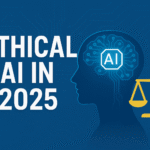
DevOps & Automation: The Backbone of Modern Software Development
In today’s fast-paced digital world, businesses demand speed, reliability, and continuous improvement in software. Traditional ways of development can’t help with rising customer demands, complex architectures, and rapid release cycles. And this is where DevOps & Automation became the backbone of modern software development, reshaping how teams build, test, deploy, and scale applications. As 2025 rolls along, companies adopting strong practices within DevOps are witnessing better performance, faster delivery, and increased customer satisfaction than ever before.
What is DevOps and Why It Matters?
DevOps integrates development (Dev) with operations (Ops), hence the term. The approach enables collaboration, enhances efficiency, and cuts down manual jobs. Instead, developers, testers, and IT operations teams work together from planning to deployment, not in silos. The alignment is therefore extended to ensure shared responsibility, transparency, and continuous improvement.
The result? Products reach the market faster, with fewer bugs, better performance, and more focus on customer experience. In an era where digital speed is everything, DevOps gives businesses the competitive edge they need.
Automation: The Engine Driving DevOps Success
Automation lies at the heart of DevOps. Without automation, DevOps would be just another workflow, but with it, teams can smoothen processes, eradicate human errors, and accelerate delivery cycles. Key areas where automation plays a powerful role include:
1. Continuous Integration (CI)
Developers integrate their code into a shared repository regularly. Automated tools detect problems, run tests, and check code quality for deployment immediately.
2. Continuous Delivery/Deployment (CD)
With automated pipelines, software can move faster from development to production with no human interference. This ensures speedier releases, uniform deployment environments, and lessened downtime.
3. Automated Testing
Automation takes place right from unit tests to performance testing, ensuring that each part of the application is being validated. This delivers higher accuracy, besides reducing the time spent on repetitive tasks.
4. Infrastructure as Code (IaC)
Using tools such as Terraform, Ansible, or AWS CloudFormation, teams are able to manage infrastructure through code, making environments reproducible, scalable, and easier to maintain.
5. Monitoring & Alerts
Automated monitoring tools continuously keep track of system health, performance logs, and errors; thus, the teams can identify issues long before they affect the user.
Together, all these domains form the foundation of a modern DevOps-driven environment.
Benefits of DevOps & Automation to Modern Businesses
Companies embracing DevOps see measurable improvements across development, operations, and customer experience. Some of the key benefits include:
- Faster Release Cycles: Automating CI/CD pipelines quickens development and deployment.
- Improved Quality: Automated tests catch issues early, reducing defects in production.
- Reduced Costs: Less downtime, fewer manual tasks, and optimized workflows cut down operational costs.
- Increased Collaboration: Developers, testers, and operations teams work as one cohesive unit.
- Better Scalability: Through infrastructure-as-code, systems can expand automatically with the increase in demand.
These benefits make DevOps a must-have for any enterprise that wants to stay competitive in the year 2025 and beyond.

Why DevOps Is the Future of Software Development
As technology evolves, so does the need for speedier, more secure, and highly reliable software delivery. DevOps and automation bring together the best of speed, quality, and collaboration; therefore, they form the core foundation of modern software development. Companies that invest in DevOps today build more robust digital products, reduce their time to market, and set themselves up for future innovation. It doesn’t matter whether your organization is a startup or an enterprise. DevOps is no longer a trend; it’s a necessity.




